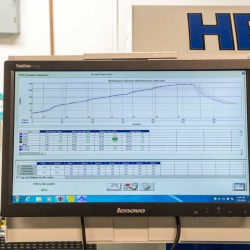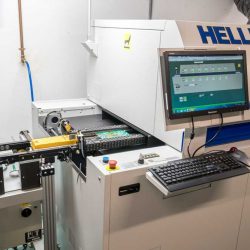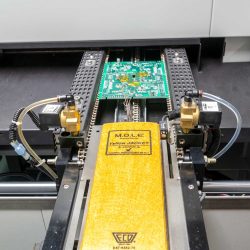Surface Mount Production
Thomas Instrumentation has been involved in SMT manufacturing for over 18 years. In that time, we’ve learned a lot of tricks of the trade and become a well-oiled machine. To make things even better, over the past 6 years, we’ve upgraded our original machines to state-of-the-art SMT production equipment. We’ve even added an Ultrasonic Stencil Cleaner, a PCB Depanelizer, an X-Ray Inspection machine, and an Automated Optical Inspection (AOI) machine. All our operators also attended special courses on the new equipment, so we’re ready for anything. The combination of our specialized equipment and highly trained, detail-oriented operators is what sets us apart from our competitors.
Our manufacturing line is capable of handling single-sided boards, double-sided boards, very small volumes (< 10), very large volumes, very light boards (< 0.3 grams), and much more. If a customer’s board is smaller than our machine’s 2.7” x 2” limit, then we just panelize the product. Panelizing is also a great way to increase production throughput and decrease cost.
Our SMT Line consists of a JOT PCB De-Stacker, an MPM Momentum 100 Screen Printer, two MYCRONIC MY100 series Pick & Place machines upgraded to MY200s with Electrical Verification, a Heller 1707 MKIII reflow oven, and an Ultrasonic Stencil Cleaner. More detailed information for each machine can be found under our Equipment tab or by clicking here. A brief description of the SMT process is shown below:
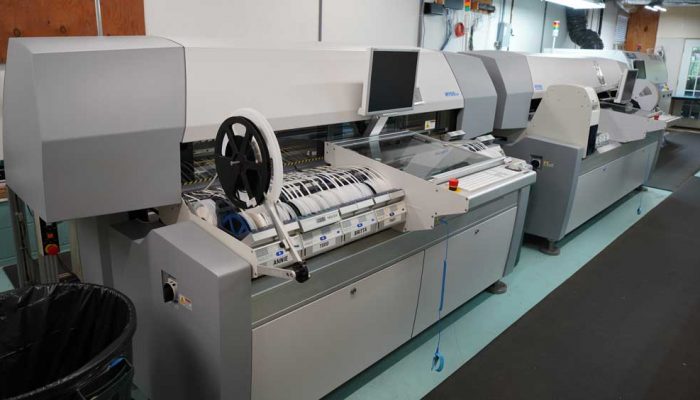
Ultrasonic Stencil Cleaner
At the end of the day, we cleanup the manufacturing room. As part of that cleanup, we need to make sure the solder stencil that goes in the MPM printer is free of paste. This station has an ultrasonic wand that we run over the stencil apertures to make sure it’s good as new and ready for the next run.
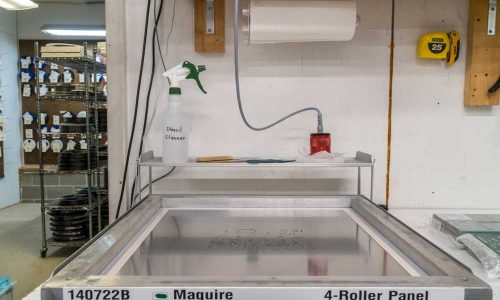
JOT PCB De-Stacker
The less we handle your boards during the manufacturing process, the better as humans can make mistakes. Examples of that would be oils from your hands upsetting the chemistry, paste getting smeared by an ill-placed finger, components getting knocked over or moved, etc. With our line, we place a large stack of your product into this de-stacker and we don’t touch them again until they’re out of the oven.
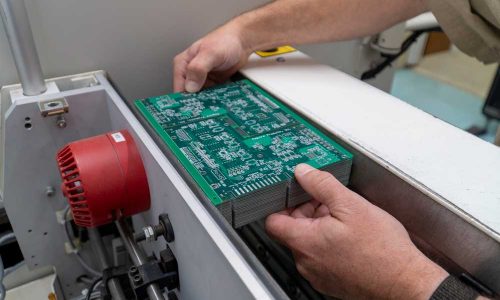
MPM Screen Printer
This machine and the board stencil are the most critical parts of the entire line. We take extra care in making sure the solder stencil is tailored correctly for each component and cleaned prior to installation in the MPM printer. Once we start production, the machine uniformly applies solder paste to the bare PCB board and then automatically inspects the board for consistency and accuracy. If there’s any issue, then it is handled by the operator. If everything passes inspection, then the boards move onto a conveyor to await component population by the MYCRONIC machines. This printer also periodically cleans the underside of the stencil to ensure good paste application throughout the day’s run. For customers without a stencil, we take care of ordering one for you as part of the setup fee. If you have an existing stencil, then we’ll review it to determine if we can use it or not.
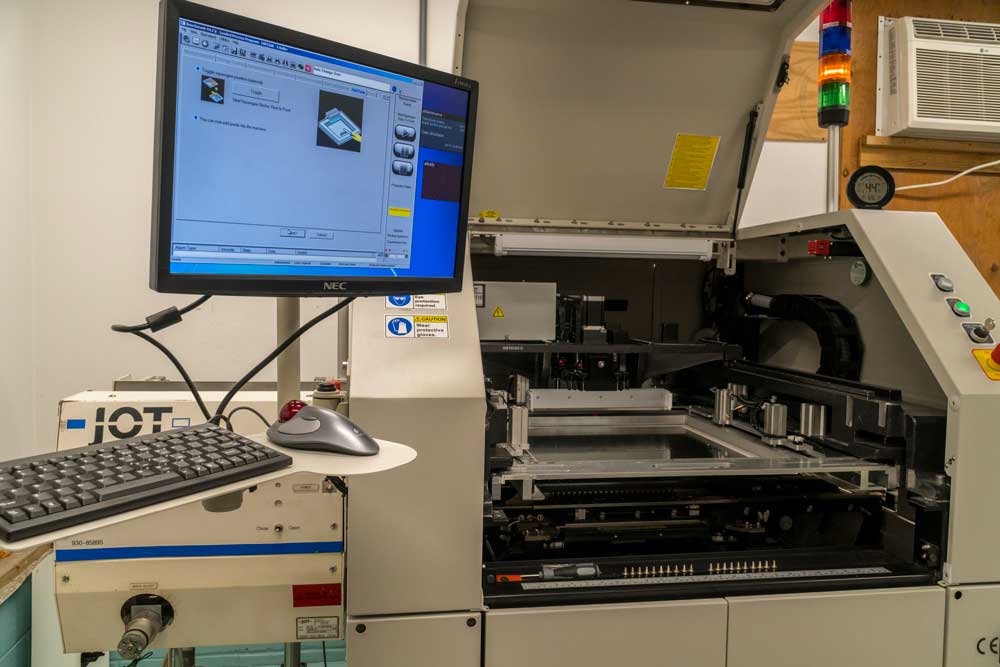
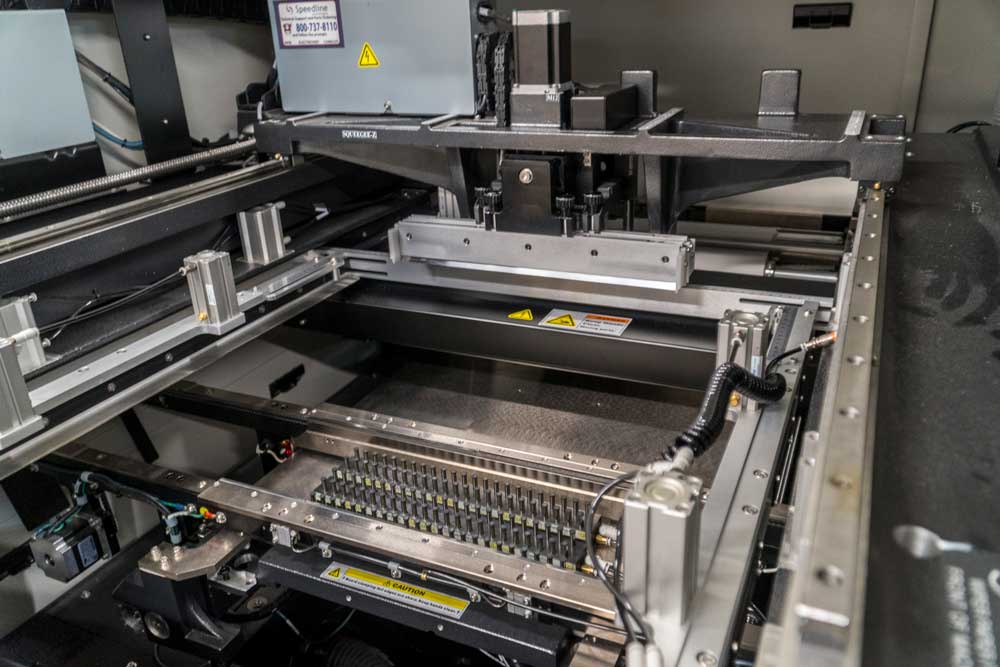
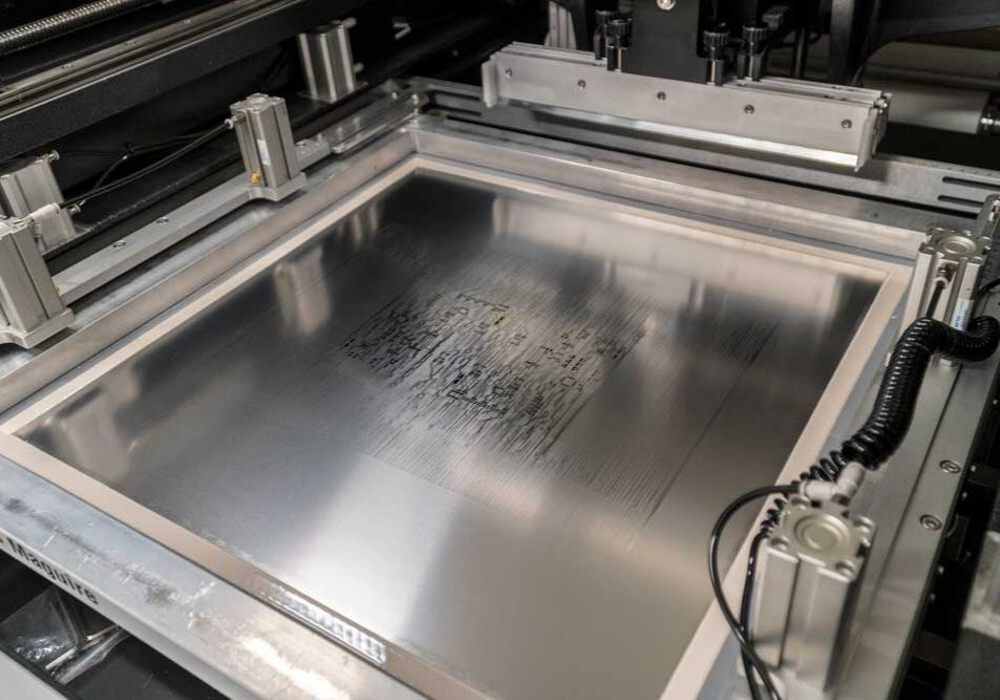
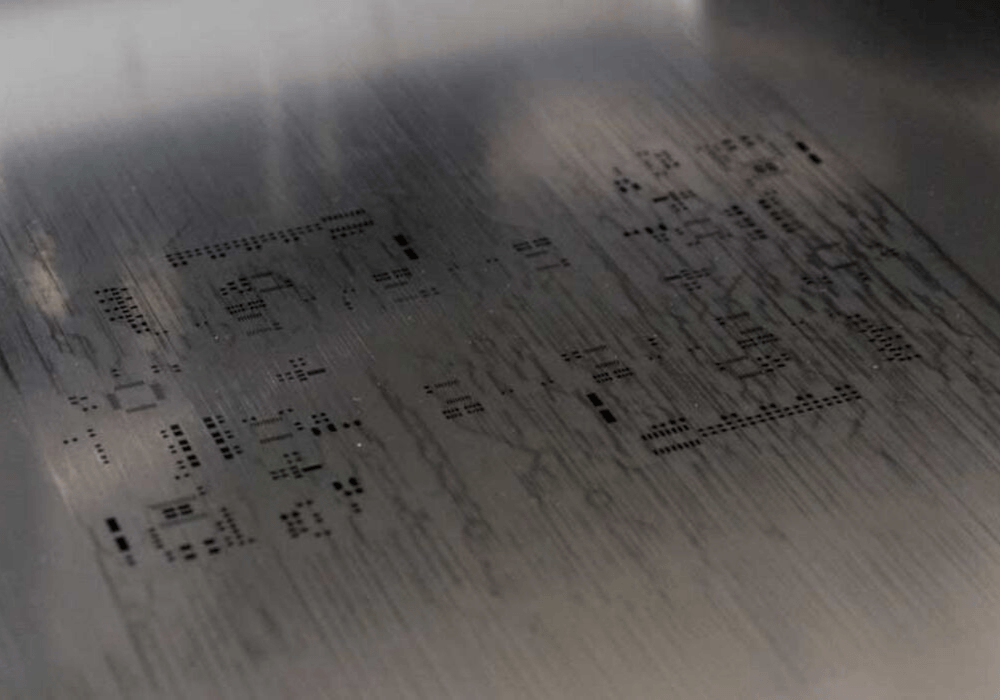
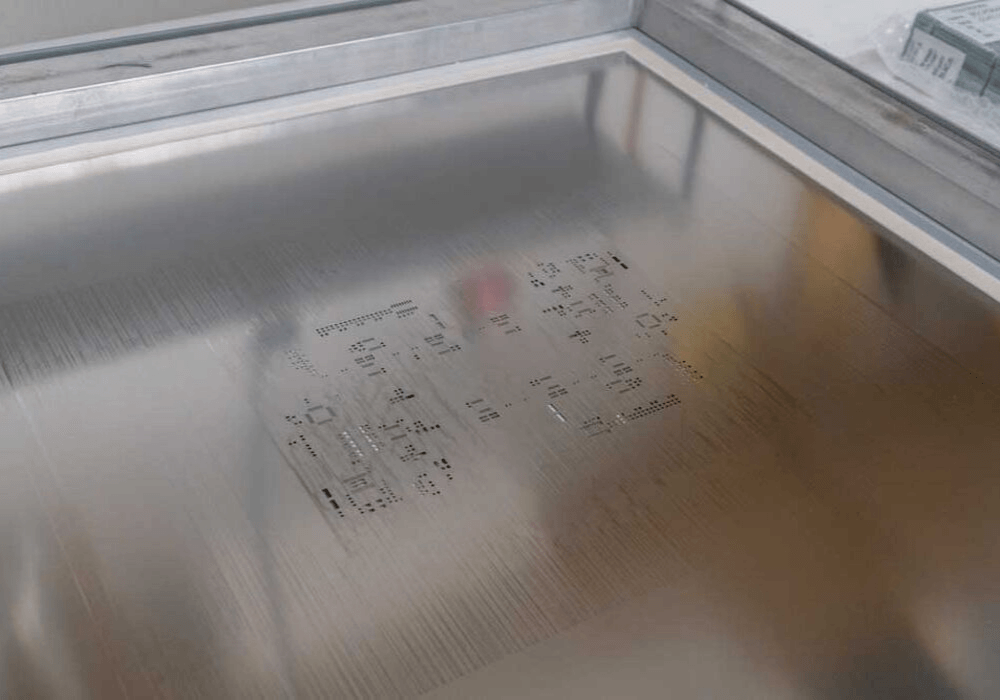
MyCronic MY100 Series
Our two pick & place machines have been upgraded to the equivalent of MY200 series machines, so they’re newer than they look. These two machines are also placed in-line and set to line mode. This means they work in tandem, allowing each machine to populate some of the parts for every board. It speeds up the manufacturing process and gives us a backup machine if one ever has an issue.
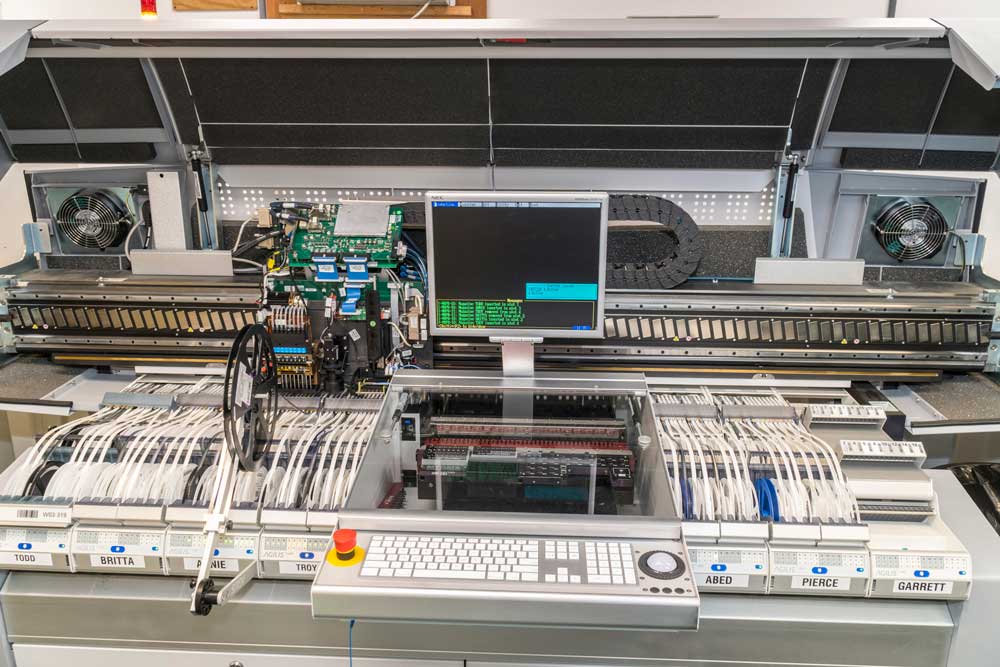
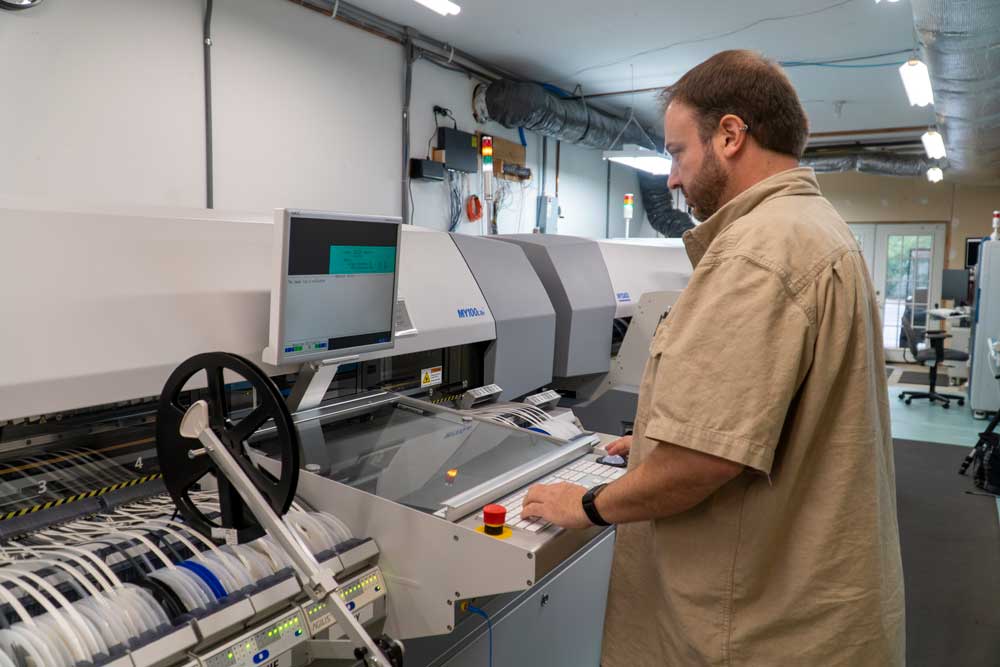
Electrical Verification
This is an optional feature we purchased for our MY100 Pick & Place machines. It’s a great feature that really sets us apart from competitors. The verification allows us to check the value of resistors, capacitors, diodes (including polarity), and some transistors. It’s another way to prevent human errors like accidentally mislabeling a component. We use this feature on all production and test the first 3 components picked from every feeder. If those 3 components pass verification, then the system assumes the reel is valid until it’s been replaced.
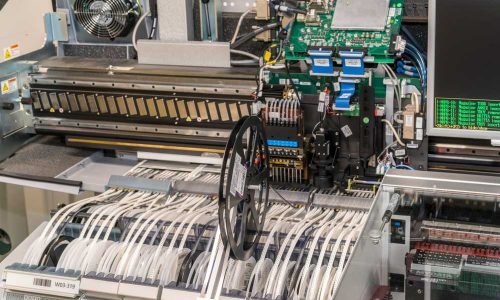
Visual Inspection Station
Once all the components have been applied, the board stops at an inspection station for an operator to visually QC it. This is the last stop for finding any problems before the solder is reflowed. If there is an issue, then it means we need to tweak part of our process in the manufacturing line. We then fix the issue or mark it for the techs and send the board into the oven.
Heller 1707 MKIII Oven
This is a steady workhorse of our manufacturing line. It has 7 zones and a temperature accuracy of +/- 10C. Operators load an oven profile that’s specific to the board being manufactured and wait for the oven to get to temperature. Once it’s up and running, boards can be sent through to reflow the solder paste. Upon completion, the oven sends each board onto a final conveyer where it awaits another quick inspection and placement in finished product racks.
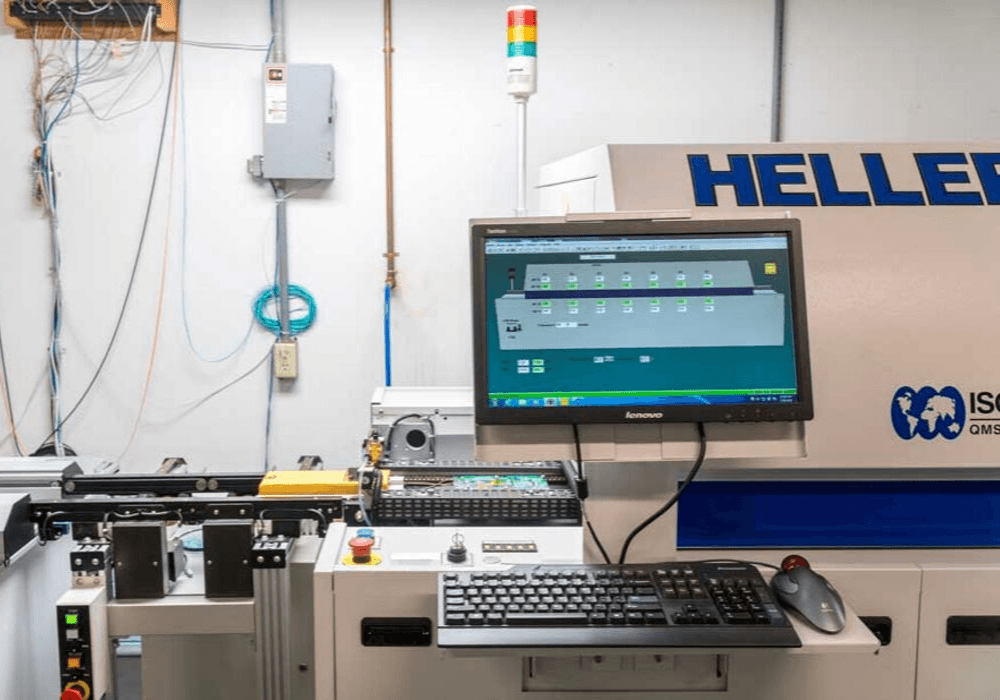
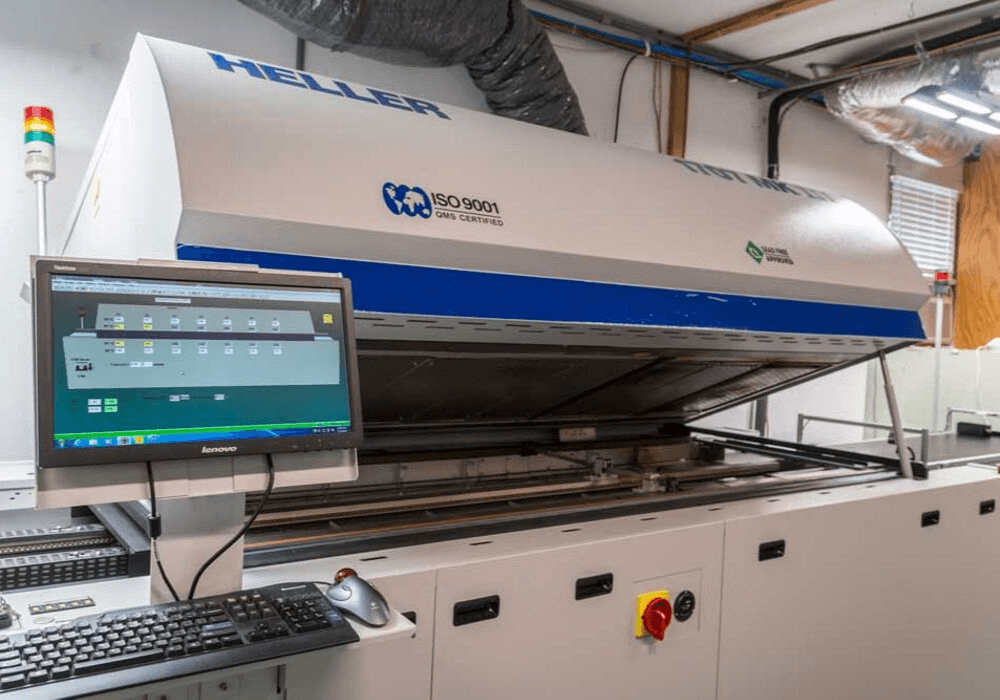
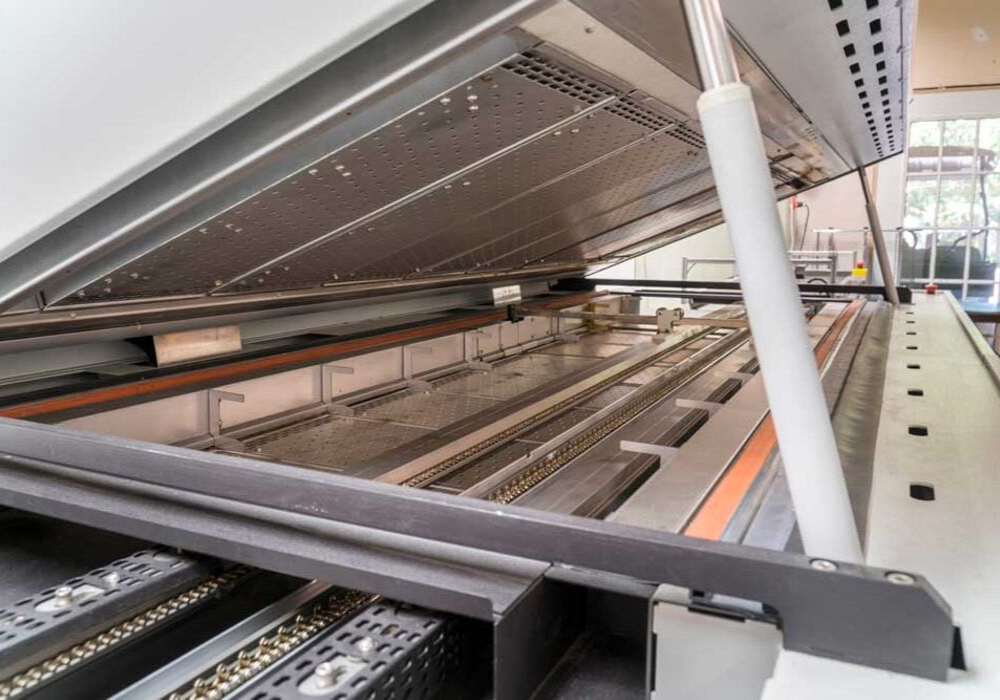
M.O.L.E. Temperature Profiling
The oven profiles mentioned earlier are developed with the help of our ECD M.O.L.E. device. It has several temperature probes that are attached to the specific board we’re profiling. Before production, we run one of the bare boards with the M.O.L.E attached through the oven multiple times. From that we can determine what temperature to set each zone to correctly reflow solder on that product.
As you can see, we have the technology to support almost any electronic manufacturing job. If you have more questions or want to request a quote, then please contact us today.

